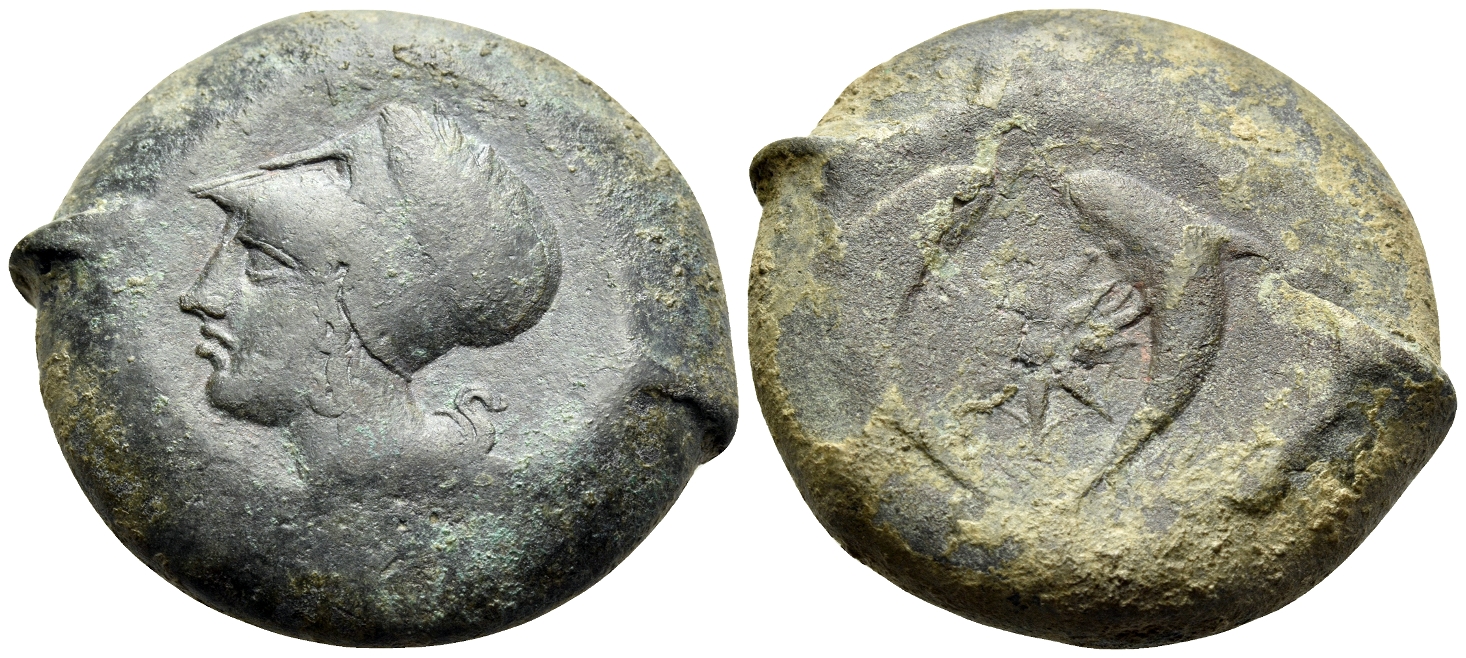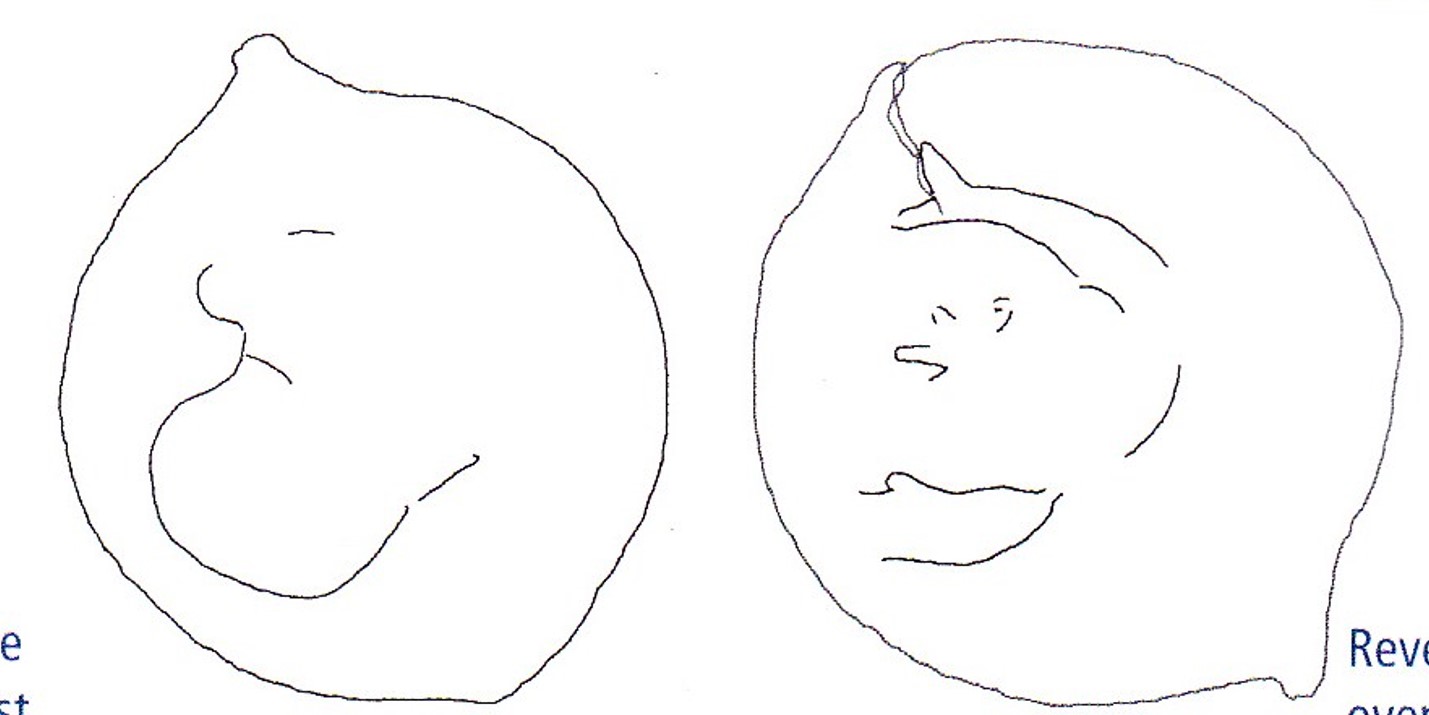354 BCE - 344 BCEΑΠΟΛΛΩΝ | ΑΔΡΑΝIΤΑΝ
Overstriking coin
Adranum_1584_MacDonald.jpg
Overstruck variety
Syracuse SO 2263.jpg

Adranum_1584_MacDonald_drawing.jpg
Description
| ObverseInscription or printing placed on the obverse.:
|
ΑΠΟΛΛΩΝ (Greek) Head of Apollo left, wearing laurel wreath.
|
ReverseInscription or printing placed on the reverse.:
|
ΑΔΡΑΝIΤΑΝ (Greek) Cithara within linear border.
|
Mint and issuing power
| MintIdentifies the place of manufacture or issue of a numismatic object.:
|
Adranum
|
Ancient regionAncient region.
|
Sicily
|
Modern countryModern country: Italy
|
AuthorityIdentifies the issuing power. The authority can be "pretended" when the name or the portrait of X is on the coin but he/she was not the issuing power. It can also be "uncertain" when there is no mention of X on the coin but he/she was the issuing power according to the historical sources:
|
Campanian mercenaries
|
Chronology
| FromIdentifies the initial date in a range assigned in a numismatic context. 354 BCE toIdentifies the final date in a range assigned in a numismatic context.. 344 BCE
|
Classical 480-323 BC  periodTime period of the numismatic object. periodTime period of the numismatic object.
|
Physical description
MetalThe physical material (usually metal) from which an object is made.: Bronze 
|
WeightWeight of the numismatic object (in grams). in grams: 29.1329.13 g <br />29,130 mg <br />
|
DenominationTerm indicating the value of a numismatic object. Examples: tetradrachm, chalkous, denarius.: drachma 
|
AxisDescribes the directional relationship between the obverse and reverse of a numismatic object.: 77 mm <br />0.7 cm <br />
|
| DiameterDescribes diameter of an object (in mm).: 2929 mm <br />2.9 cm <br />
|
|
References
Description
| ObverseInscription or printing placed on the obverse.:
|
ΣΥΡΑ (Greek) Head of Athena left, wearing Corinthian helmet decorated with ivy wreath (visible on obverse: outline of most of helmet)
|
ReverseInscription or printing placed on the reverse.:
|
Two dolphins flanking stylized starfish (visible on reverse: large portions of one dolphin, traces of the second dolphin)
|
Mint and issuing power
Chronology
| FromIdentifies the initial date in a range assigned in a numismatic context. 400 BCE toIdentifies the final date in a range assigned in a numismatic context.. 367 BCE
|
Classical 480-323 BC  periodTime period of the numismatic object. periodTime period of the numismatic object.
|
Physical description
| DenominationTerm indicating the value of a numismatic object. Examples: tetradrachm, chalkous, denarius. ᵖ:
|
drachma 
|
|
|
References
| Frequency of overstrikesFrequency of overstrikes:
|
frequent
|
Level of confidenceLevel of confidence of the identification:
|
sure
|
| RemarksRemarks:
|
(visible on obverse: outline of most of helmet) (visible on reverse: large portions of one dolphin, traces of the second dolphin)
|
References
- ^ Calciati, Romolo (1987), Corpus nummorum siculorum. La monetazione di bronzo/The bronze coinage, vol. 3, Milan, Edizioni G. M.
- ^ Macdonald, David (2009), Overstruck Greek coins: studies in Greek chronology and monetary theory, Whitman Publishing, Atlanta.
- a b Hoover, Oliver D. (2012), The Handbook of Greek Coinage Series. 2. Handbook of the Coins of Sicily (Including Lipara). Civic, Royal, Siculo-Punic, and Romano-Sicilian Issues. Sixth to First Centuries BC, Lancaster-London, 489 p.
- ^ Calciati, Romolo (1986), Corpus nummorum siculorum. La monetazione di bronzo/The bronze coinage, vol. 2, Milan, Edizioni G. M.
- ^ Sylloge Nummorum Graecorum ANS 5. The Collection of the American Numismatic Society. Sicily 3. Syracuse-Siceliotes, New York, 1988,


